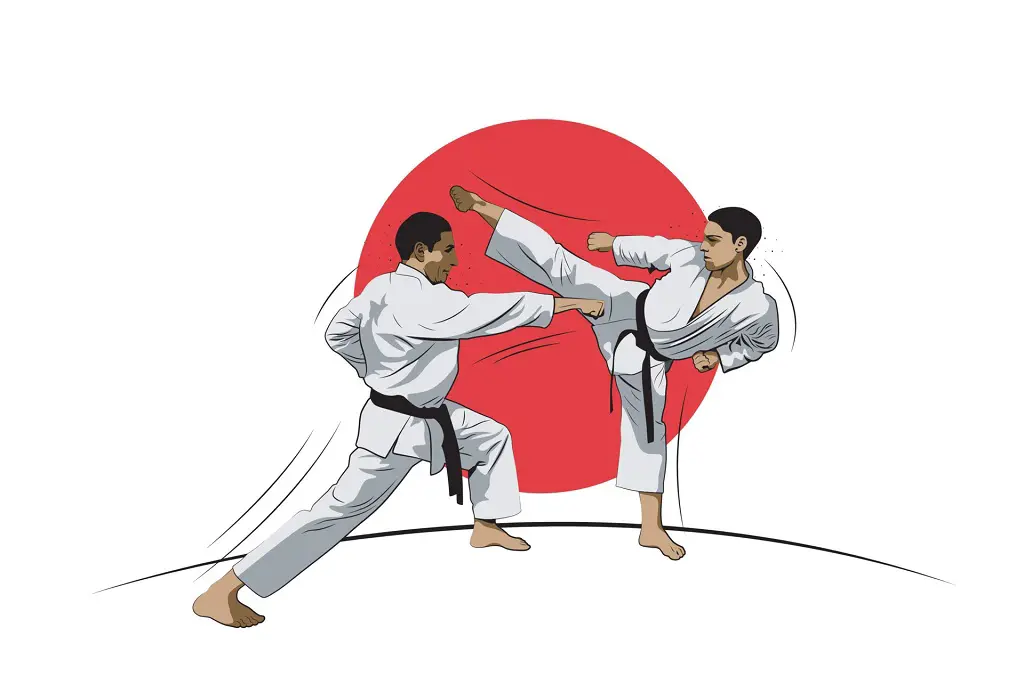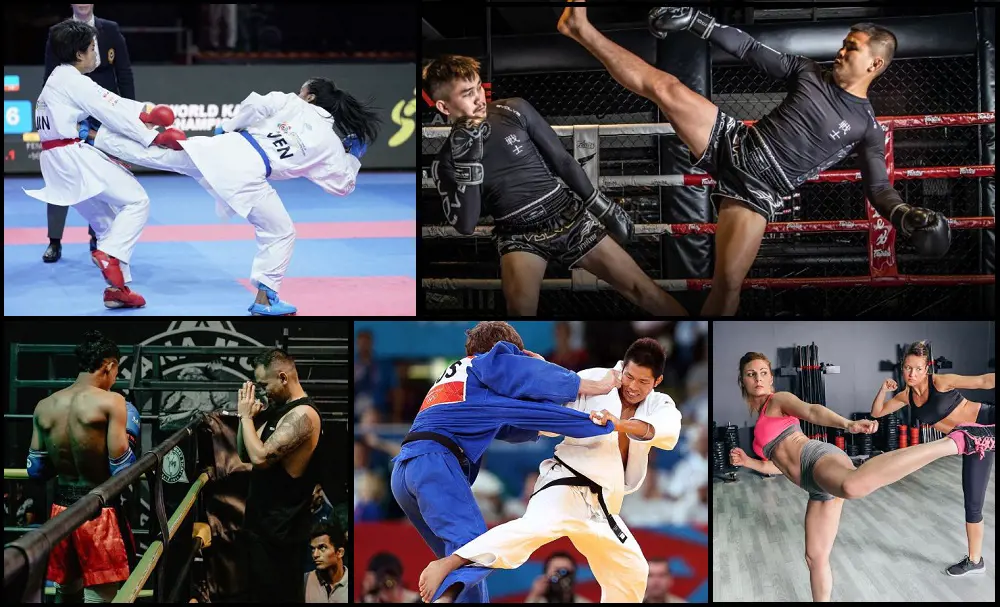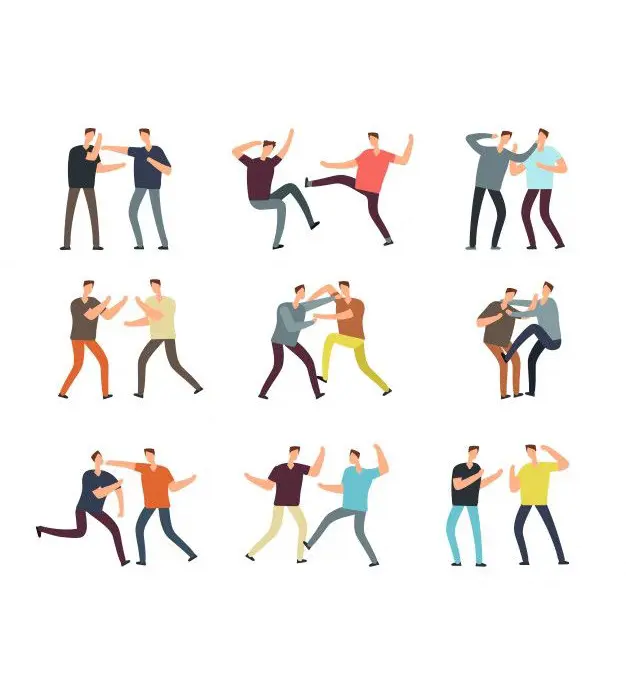Colors Of Belts In Karate In Order are 1. White 2. Yellow 3. Orange 4. Green 5. Blue 6. Purple 7. Brown and 8. Black.
It takes several years for one person to achieve a different colored belt from the previous one. Karate's origin traces back more than 1400 years ago, while modern karate will soon reach 100 years.
The number of karate practitioners ranges between 50 million to 100 million worldwide. With its scholarly history, it made it to the 2020 Summer Olympics.
It debuted in its homeland, Tokyo, Japan, and saw men and women karatekas competing in different weight classes.
Karate is one of the major popular and practiced forms of martial arts around the globe. With its recent success on an international scale, there is much more to learn about it.
Thus, karate belts, their ranking orders, and their significance are some of the few things to start with.
Here are a few tips to determine the karate ranking system and the importance of colored belts in this martial art.
What Are Kyu and Dan?
Kyu or Kyū is a Japanese term used in karate to determine grades or degrees of proficiency or experience. It is issued in both modern martial arts and academic tests.
Moreover, profound activities, including tea ceremony, flower arranging, and traditional games like Go and shogi, also uses Kyu to test an individual's level.
Kyū ranks stress stance, balance, and coordination with the addition of speed and power at higher levels.

A karateka starts with the highest number of kyu at 10, and eventually, progress leads to a lower number of kyu in time. In between, they also receive belts of color, varying in their academy's provision system.
- 10th Grade- Jikkyū / Jukkyū
- 9th Grade- Kyūkyū
- 8th Grade- Hakkyū / Hachikyu
- 7th Grade- Nanakyū
- 6th Grade- Rokkyū
- 5th Grade- Gokyū
- 4th Grade- Yonkyū
- 3rd Grade- Sankyū
- 2nd Grade- Nikyū
- 1st Grade- Ikkyū
After the determination of kyu, dan differentiates a karateka's further progress.
Dan is used to rank a karateka who has surpassed the kyu. It indicates a high degree of knowledge and competence in karate.
A Dan-ranked karateka can become an instructor and teach students. The dan ranks also include ten common ranks from 10th to 1st. However, the ranking system is specific to a school or style and is only awarded by the higher-graded representative of a committee.
- 1st Grade- Shodan
- 2nd Grade- Nidan
- 3rd Grade- Sandan
- 4th Grade- Yondan
- 5th Grade- Godan
- 6th Grade- Rokudan
- 7th Grade- Shichidan
- 8th Grade- Hachidan
- 9th Grade- Kudan
- 10th Grade- Jūdan
The lower dan grades normally are attained through competitions and grading examinations. Meanwhile, the higher dan grades require many years of experience and contribution to karate.

Styles of Karate
Karate is divided into many styles depending on the different training methods, focuses, and cultures. The martial art originally came from Okinawa.
World Karate Federation has recognized only four styles of karate which are Gōjū-ryū, Shotokan, Shitō-ryū, and Wadō-ryū.
These four styles make up international competitions and have overshadowed other forms of karate.
Goju-ryu origanted in Naha while Shotokan, Wado-ryu, and Shito-ryu, all three originated from the Shorin-Ryu style in Shuri, Okinawa.
Shuri karate focuses on drawing influences from different predecessors. Meanwhile, Shito-ryu is considered to be a blend of Shuri and Naha traditions.
Short History on Karate Rank System
Karate originated in the now-nonexistent Ryukyu Kingdom, Ryukyu Islands. It developed from the indigenous Ryukyuan martial arts, influenced by Chinese martial arts.
After the Japanese Empire officially annexed the kingdom in March 1879, the place was later incorporated as Okinawa Prefecture.
Ankō Itosu sensei introduced a modified form of karate to Okinawa schools. His letter titled "Ten Precepts (Tode Jukun) of Karate," written on October 1908 to the Ministry of Education and the Ministry of War in Japan, formed the basics of modern karate.

Gichin Funakoshi later introduced the art to the Japanese mainland in 1922, following Itosu and another practitioner, Anko Asato.
Hence, both are credited with introducing karate to the world, while Funakoshi is primarily known as the "father of modern karate."
He taught karate at the university level in Japan and was the honorary head of the Japan Karate Association upon its establishment in 1949.
Moreover, the late Funakoshi sensei introduced Shotokan Karate. He also adopted the Dan system from the judo founder Jigoro Kano.
Thus, modern karate is more familiar with Funakoshi than Itosu and Asato sensei.
Karate Belts Ranking Order
The color of each Karate belt represents the level of experience and ability that a karateka holds. Kyu tests grant the colored belts throughout the learning process, while Dan tests determine a black belt.
Everyone starts with a white belt and progresses further to gain other colored belts. The Kyu tests look after the student's following three components to assign belts:
1. Kihon (Basics)
Kihon means karate basics, including stances, strikes, punches, kicks, and blocks. It is determined by karate styles. Kihon is the training phase which is practiced in a smaller group.
2. Kata (formalized sequence of movements)
Kata means "shape" or "model." Hence, it is a formalized sequence of movements in both the offensive and defensive postures.
Kata is important for a karateka to attain a formal rank. However, the requirements for Kata to pass an exam vary among karate schools.
3. Kumite (Sparring)
Kumite is sparring in Japanese. It is both a sport and self-defense training, considering the levels of physical contact.
There are many types of kumite. In full contact karate kumite, the results of the impact brings in points rather than the formal appearance of the scoring technique.
After the students emit impressive traits in the tests, they are upgraded toward each high Kyu ranks. The karate academy determines a karateka's advancement after a test.
They are also presented with colored belts after each kyu examination.
Here is what we know about Karate belts ranking and orders in the kyu rank:
8. White Belt
White is the lowest-ranked belt and is often worn by beginner-level students. In karate, white symbolizes the birth of new light and the starting phase of one's karate journey.
White also represents the new karate students' pure nature and newly-formed devotion to the sport.
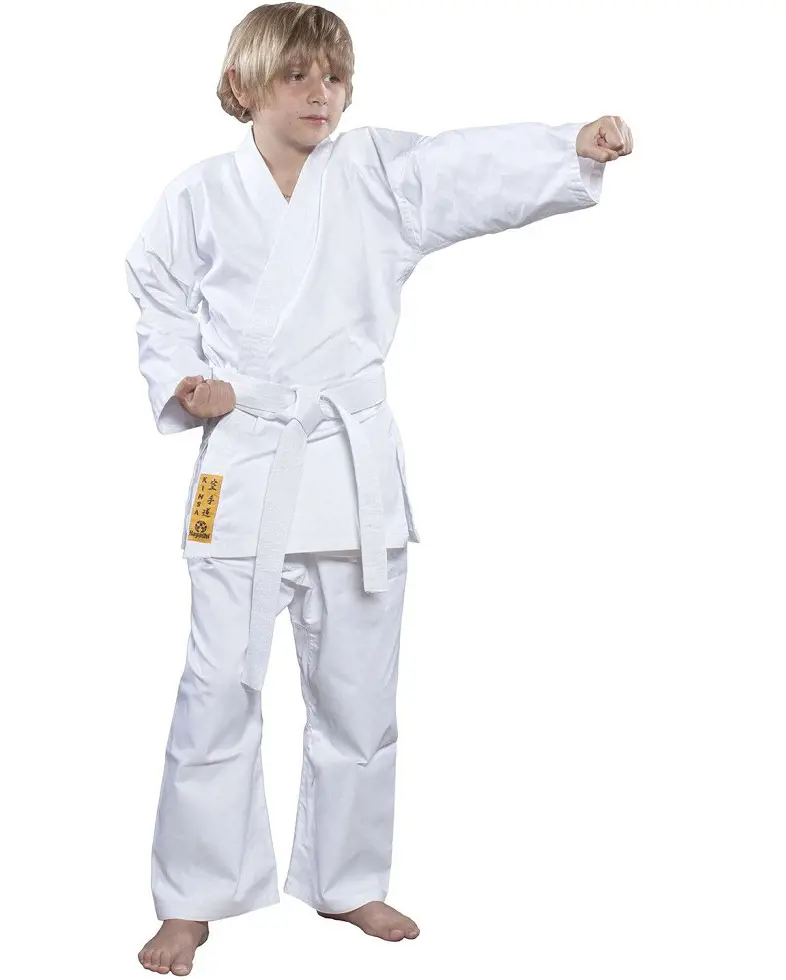
The karatekas of this genre fall in the lowest kyu, the tenth, and the ninth. It takes them at least three months of regular practice to move forward to the next kyu.
Children are taught to avoid hitting others and taught in combat situations during this period. Their course advances towards more physical contact through advancement to other levels.
7. Yellow Belt
The 8th kyu belt, While belt represents the first beams of sunlight. The beginners master the basics at this level of martial arts.
They learn more straightforward fighting techniques to mix hands and legs in their basic knowledge.
Karatekas of this kyu require an average practice of seven to nine months before advancing toward the next kyu.

Besides practicing the basic stance, punches and kicks are added to the course. A beginner karateka can spar with almost fifty percent contact with the rival at this stage.
However, kids are taught to prevent bullying and be disciplined simultaneously.
6. Orange Belt
The color Orange illustrates the growing strength of the sun. Hence, a beginner karateka who has mastered the art's ten self-defense moves is given an orange belt.
Furthermore, one can master karate’s basic ten self-defense moves at this time.
A karateka wielding an orange belt falls in the seventh kyu in the kyu level list. One may take up to nine or ten months to advance to another level.
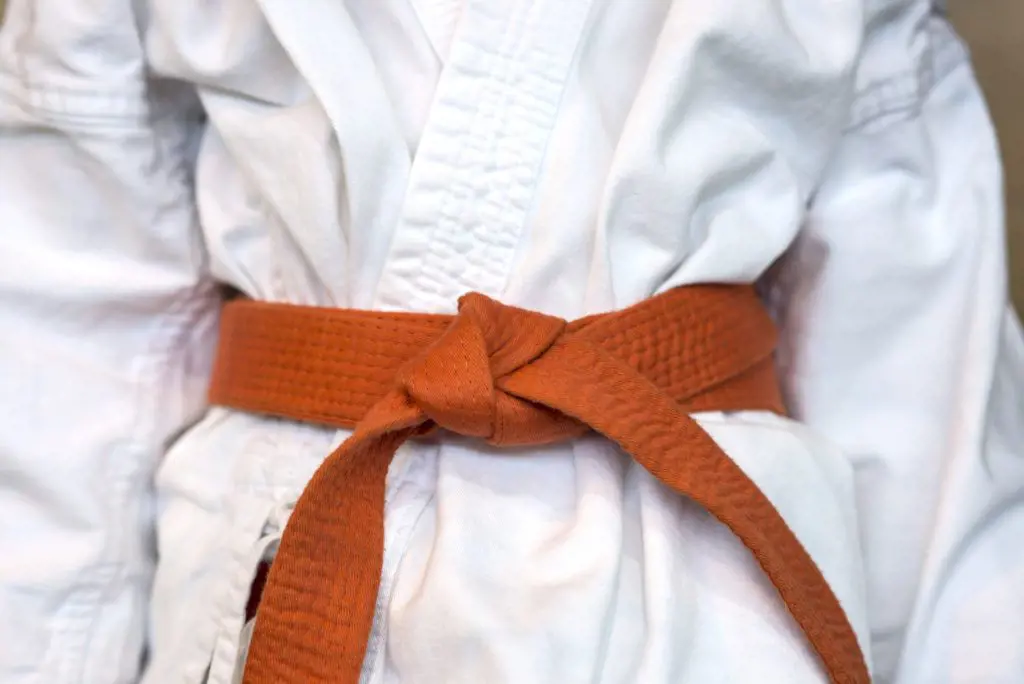
NY Martial Arts Academy confirms that they start giving their students more advanced combinations and takedown practices at this stage.
Their lessons focus on teaching the importance of learning and sharing rather than taking by force.
Hence, coming this far gives the idea of the disciplines of being a martial artist.
5. Green Belt
Green color is a representation of the growth of seeds and plants. Hence, a green belt denotes the students' growth in karate so far.
It is given to students who are now learning more complex techniques to strengthen and refine their skills.
At this stage, they learn to strike, grapple, and wrestle. The karatekas must start practicing at home to be disciplined in this martial art.
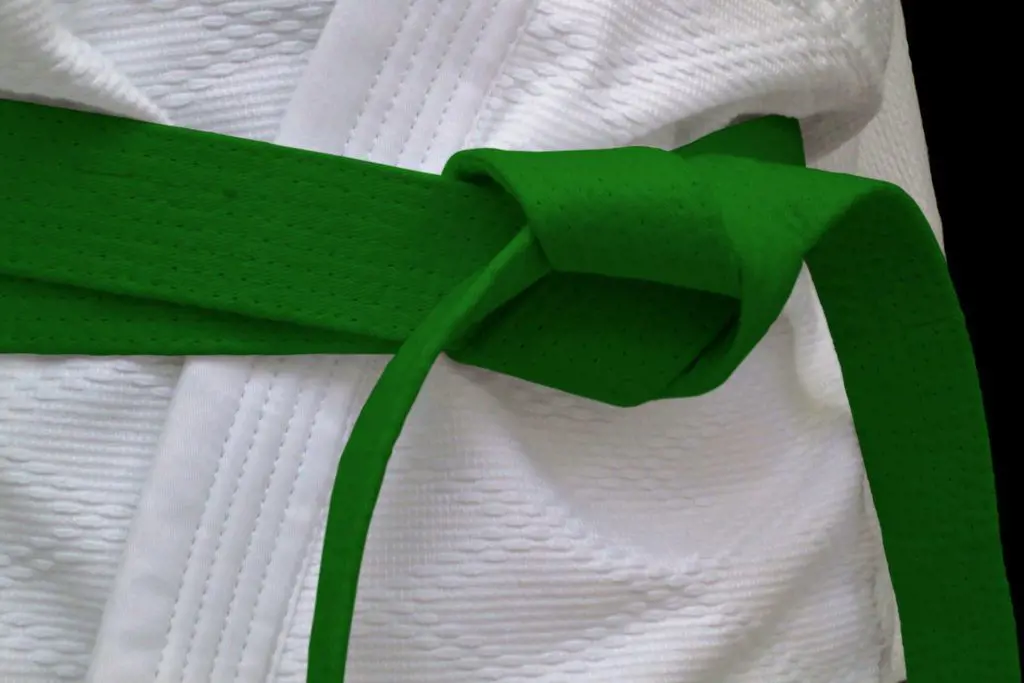
The sixth kyu-leveled students need an average time of ten to twelve months of sheer practice before moving forward.
They gradually improve in self-defense and understand karate skills on a deeper note. Green-belted karatekas develop a better sense of their opponent's moves at this point.
Hence, this stage of learning is quite an important part for the kids.
4. Blue Belt
The blue belt represents the plant or students growing towards the blue sky (deeper into karate). At this level, the students learn to apply to spar and participate freely in real fights.
They can also defend themselves with the additional knowledge of martial arts. This kyu will allow their minds and bodies to grow and develop.
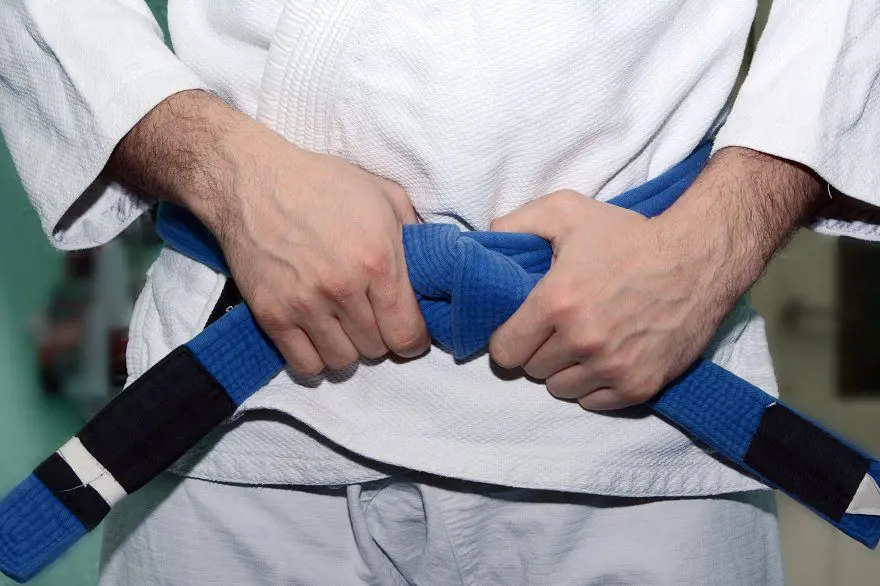
Meanwhile, it takes them from twelve to twenty months to master this kyu and to advance.
They have found a grip over their opponent when dueling. They become more capable and assured of defending themselves in a real fight.
In addition, they've improved their ability to count as time has passed.
3. Purple Belt
Purple portrays one of the colors of dawn. Thus, a purple belt in one's karate journey showcases the steady transition from the lower kyus to the advanced levels of art.
The fourth kyu teaches students to learn advanced footwork. The lessons highlight when to be stern and when to give in.
The average time to advance at this kyu is twelve to twenty months.
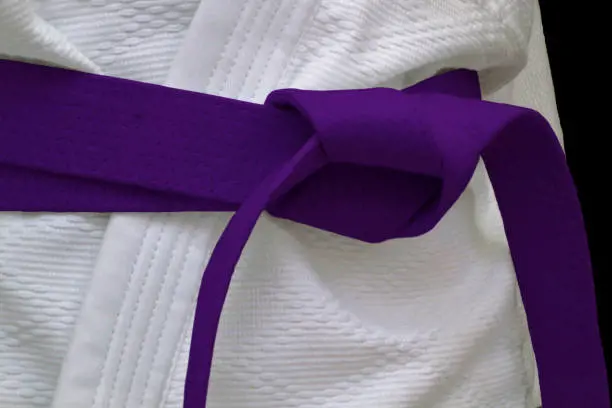
While Red belts are also considered to be at this kyu, the provision and acceptance of this belt differ according to the various karate styles and dojos.
Red belts are not used in many martial arts, including karate. However, many dojos and academies have started to denote a red belt for progress at a higher level.
2. Brown Belt
Brown symbolizes the ripening of seed after its maturing and harvesting period. Thus, a brown belt is awarded to students who have learned the advanced course and matured in the art of karate.
Karatekas at this kyu focus on sharpening physical technique and being mentally strong. Hence, a student of this stage is ready for real combat.

The brown belt takes from the third to the first kyu in the belt ranking. According to an academy's practices, different patterns in the belt may determine the kyu level.
Students require at least twelve to twenty months of regular practice and knowledge at this kyu before going for the Black belt.
1. Black Belt
Black belt symbolizes the ultimate dan rank and the highest level of colored belts in karate. A person capable of this belt has mastered all the mental and physical techniques after years of rigorous training.
All practitioners wield the black belt from the tenth to the first kyu, representing the darkness beyond the sun.

Hence, for someone who started as a new light (white belt), coming beyond the sun makes them a master. Therefore, they can start teaching disciples and educate them on the various levels of karate.
Earning a black belt rank in karate or martial arts is hard and time-intensive work. One may take around four years to reach the black belt dan.
The exact requirements and time to get a black belt to depend on the style of karate, the academy, and promotional criteria.
This makes up our list of karate belts ranking. There have been many modifications to belt awarding throughout the years, but these belts remain on the top.
Modern karate has accepted new changes over the past years for the student's adaptability.
